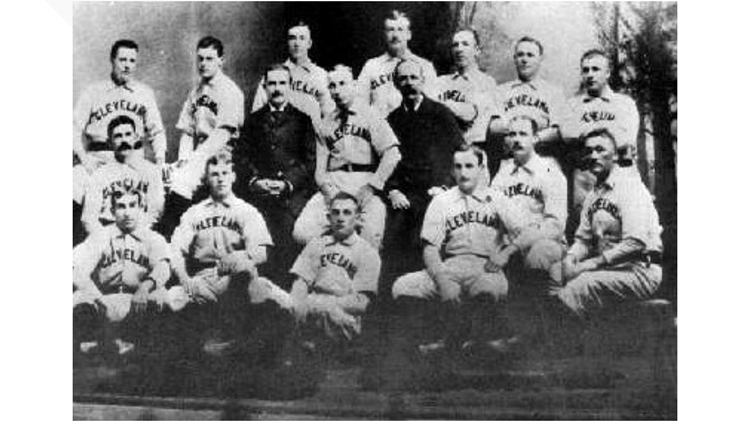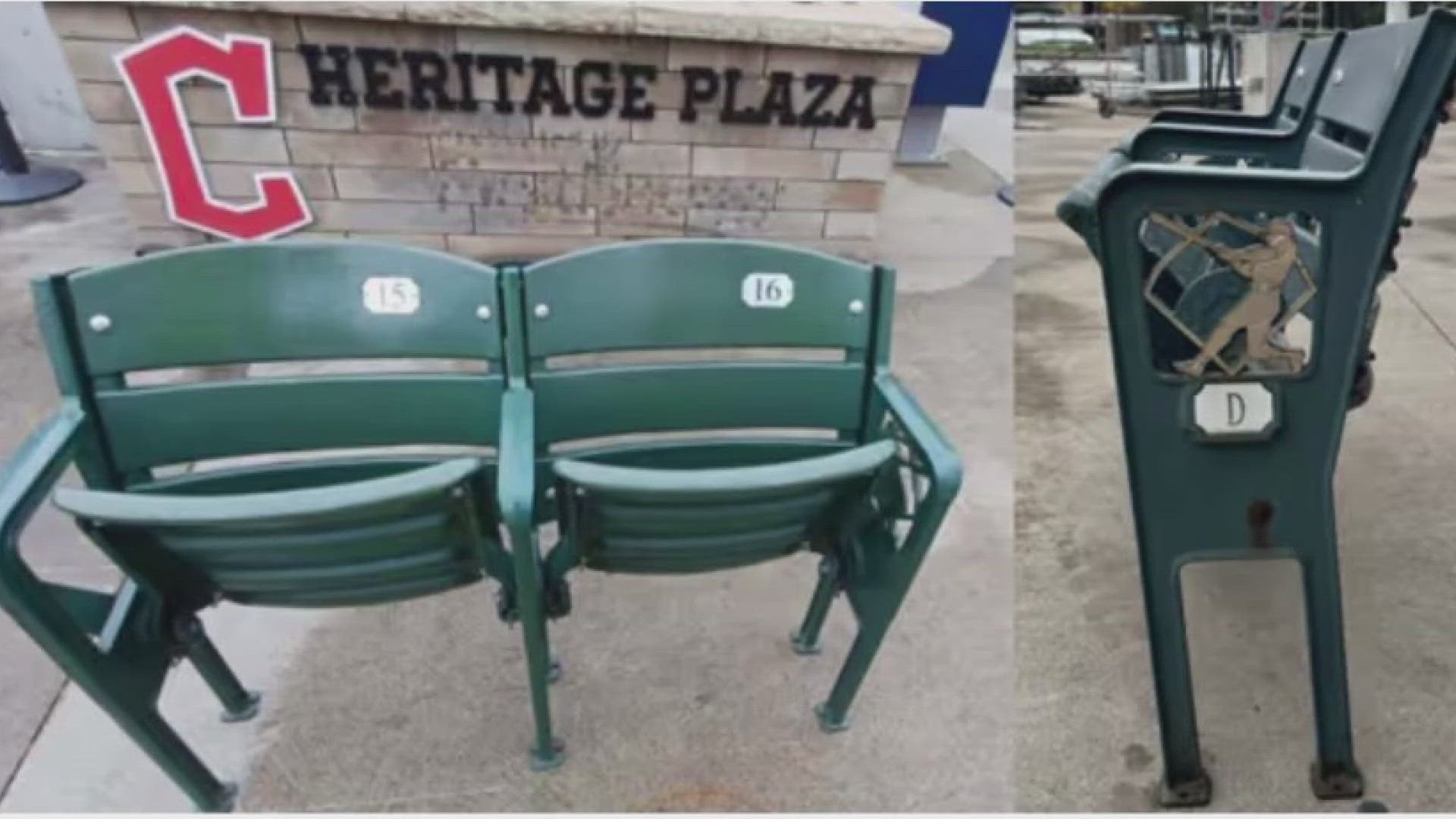CLEVELAND — As fans continue to debate the possibility of a new name for the Indians, a front-runner has emerged among the contenders.
The moniker "Spiders" is currently a 3-1 favorite to become Cleveland's new identity, according to BetOnline.ag. Several other options are close behind, such as "Naps" (4-1), "Guardians" (5-1), and "Buckeyes" (6-1).
BUCKEYES, ANYONE?: Sen. Sherrod Brown suggests renaming Indians after former Negro League team
Like several of the suggested nicknames, "Spiders" would be an ode to Cleveland's long baseball history. It's a time period that is often forgotten, perhaps because some of the memories are quite frankly too awful to bear. However, it was an era that also features some tremendous highs, including a man with a legitimate case for "Greatest of All-time."
Join us now as we look back at the 13-year tenure of the Cleveland Spiders: The heroes of the lakefront, until they weren't.
Origins & early struggles
Fun fact: The Spiders actually weren't the first Major League Baseball team to call Cleveland home. That honor belongs to the "Forest Citys" (one of the town's own nicknames back in the day), who joined the National Association—America's first "major league"—as a charter member in 1871. The club went just 16-35 over two seasons before folding, but in 1879 a new franchise known as the "Blues" joined the National League.
The Blues enjoyed some success, with right-hander Jim McCormick (one of the best pitchers not in the Hall of Fame) accounting for all but two of the teams 47 wins in 1880 while tossing an astonishing 72 complete games and 657.2 innings. The team finished third in the NL that season, and just three years later found themselves in a pennant race before faltering late and finishing 7.5 games out. Things looked to be on the upswing, but following a disastrous 1884 campaign that saw the Blues go just 35-77, New York businessman Charlie Byrne bought the club for $10,000 (more than $288,000 today) and merged it with his "Brooklyn Grays" franchise. More than 130 years later, you might know them as the Los Angeles Dodgers.

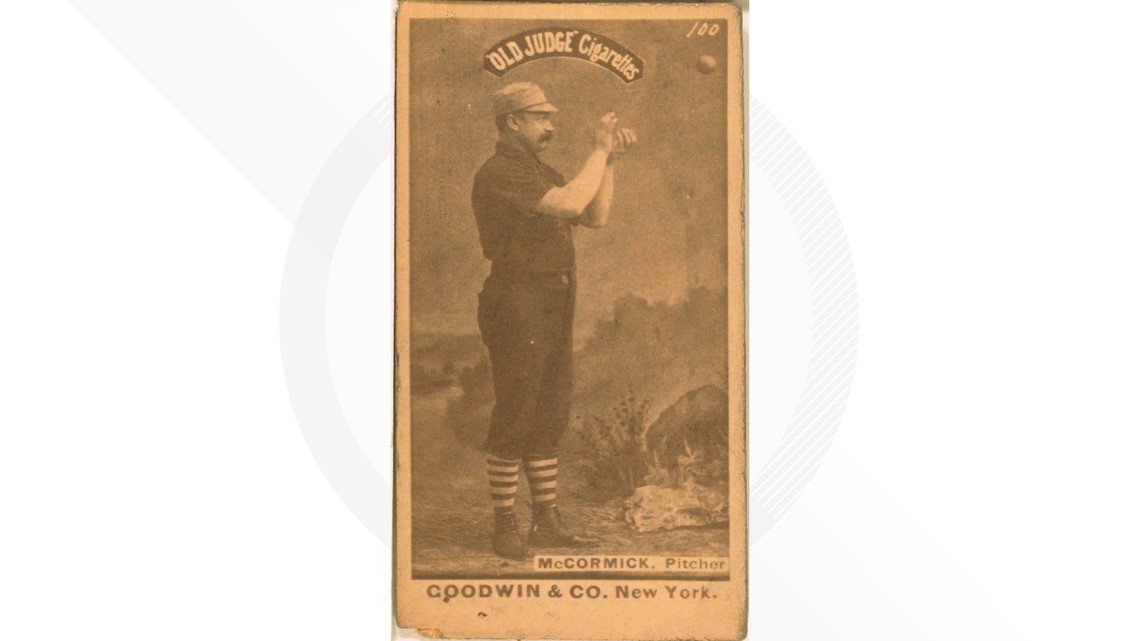
Cleveland was now personally 0-for-2 with baseball, but the city wouldn't have to wait long for yet another team to pop up on its doorstep: In 1887, brothers Stanley and Frank Robison founded a new franchise that again carried both the "Blues" and "Forest Citys" names. The club played in the competing American Association its first two years, and despite winning just under a third of their games did enough to move on to the more-established National League prior to 1889. That year, the group became known as the "Spiders," an identity they would officially keep for the rest of their existence.
Enter 'Cyclone'
Every baseball franchise has one player most fans consider to be their "GOAT." For the Indians, it's Bob Feller; for the Spiders, it was unquestionably a man born with the name of Denton True Young.
Raised on a farm in Tuscarawas County, Young got his first taste pitching professionally in Canton before signing with Cleveland in August of 1890. The Spiders were mired in yet another losing campaign, but the 23-year-old gave them a peak at things to come in his big league debut when he beat the Chicago Colts with a complete game. He was only getting started, and soon, supporters would come to know him by a different name: "Cyclone," later shorted to "Cy" Young.

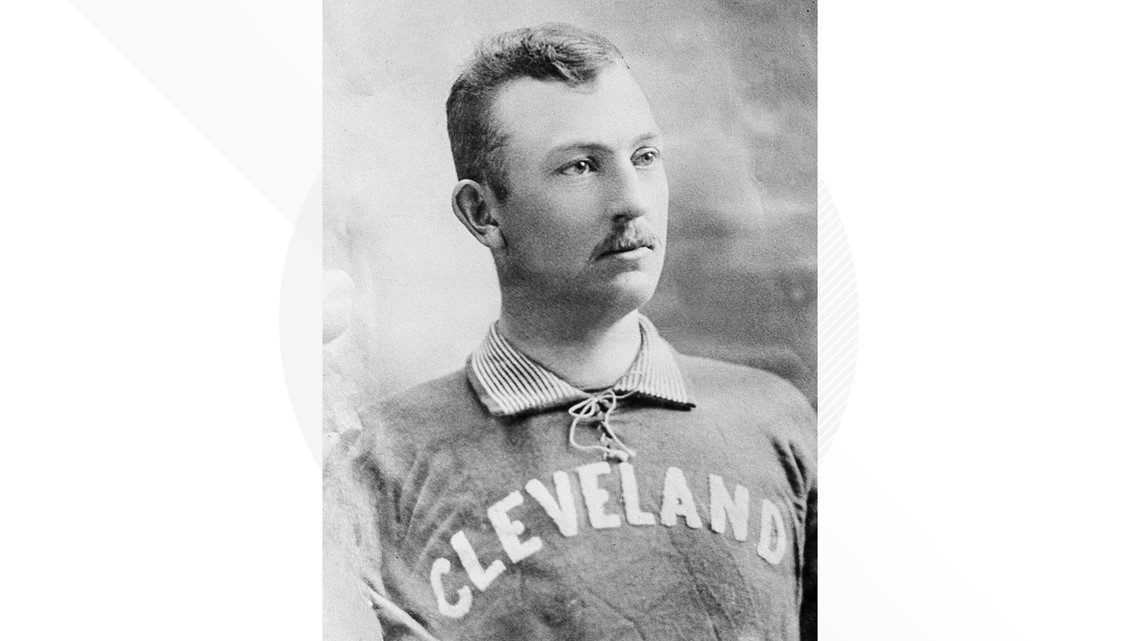
Cy would pitch eight more full seasons with the Spiders, and was the unquestioned leader of a strong pitching staff that included men like George Cuppy. His best season came in 1892, when he led the NL with 36 wins, nine shutouts, and a 1.93 ERA to go with 48 complete games across 453 innings pitched. It was one of three 30-win seasons Young would post for Cleveland, and other than his rookie year, he never won less than 21 for them.
Young finished his Spiders tenure with 240 victories and a remarkable 346 complete games, and in 1897 even tossed his first of three no-hitters (although he would swear one of the four Cleveland errors was actually a base hit). He would later return to Northeast Ohio in his 40s to pitch for the Indians franchise, and ended his 22-year career with unbreakable records of 511 wins and 749 complete games.
Forever a baseball immortal, Young died in 1955 and is buried in Newcomerstown, but not before being inducted into the Hall of Fame with a Cleveland cap on his plaque. In addition, the award given each year to the best pitchers in baseball's two leagues now bears his name.
Temple Cup Champions
As Young improved, so did the team around him, and the Spiders had plenty of great players to complement their ace:
- Jesse Burkett: Hit over .400 and led the NL in hits two years in a row; inducted into the Hall of Fame as the all-time leader in inside-the-park home runs
- Oliver "Patsy" Tebeau: A solid hitter, he had his best success as the manager, guiding the team to eight straight winning seasons
- Ed McKean: The longest-tenured Spider (12 seasons), "Mack" hit over .300 five times while rarely missing a game at shortstop
- George Cuppy: Averaged 20 wins over his seven seasons and led the NL in shutouts in 1894
- Clarence "Cupid" Childs: Was ahead of his time in drawing walks, giving him a .434 on-base percentage to go with his .318 average for Cleveland; also displayed solid range at second base
With the NL standing as the only legitimate league in the 1890s, there was no "World Series" as we have come to know it, although Cleveland did face off with (and lose to) the Boston Beaneaters in a postseason exhibition series of the same name in 1892. During their run, the Spiders never won an NL pennant, but still earned what some consider to be the city's first major sports championship.
From 1894-97, the league's first and second place teams played each other in a best-of-seven series known as the "Temple Cup." The 30-inch-high trophy was donated by Pittsburgh Pirates part-owner William Chase Temple, and the winning team would also earn 65% of the revenue (remember, salaries were not what they are today).
The 1895 Spiders were at their very best: Cy Young won 35 games and George Cuppy added 26; Jesse Burkett led the league with a .405 average to go with 225 hits and 41 stolen bases; even player-manager Patsy Tebeau hit .318 as Cleveland averaged almost seven runs a game (for perspective, the famed 1995 Indians averaged less than six). They ended the season three games behind the pennant-winning Baltimore Orioles in second place at 84-46, setting up a showdown for the Temple Cup.

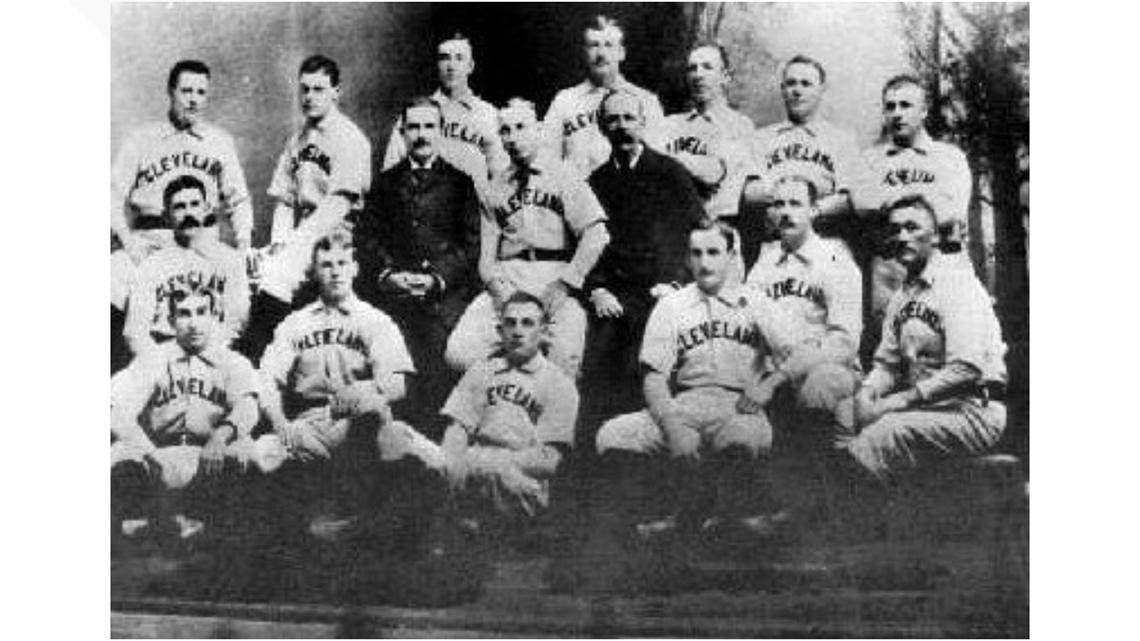
Not much detailed information exists about the series itself, but the Spiders prevailed in five games thanks to Young's stellar pitching and amid apparent intense fan rowdyism both at Baltimore's Union Park and at League Park in the Hough neighborhood. Clevelanders got to celebrate a "world championship," the only thing the Spiders would win during their existence.
Cleveland would face Baltimore in a rematch one year later, but got swept in four games. The Temple Cup would cease to exist following 1897, mostly because teams had trouble getting fans interested. Still, the champion Spiders hold up as one of the greatest teams in this city's history, and the title would predate the Indians' first World Series triumph by a quarter-century.
'THEY'RE INDIANS NOW'
The Spiders had at least some impact on the franchise that succeeded them, when in 1897 they signed a talented outfielder named Louis Francis Sockalexis. The son of a Penobscot Indian chief from Maine, he was one of the first Native Americans to play professional baseball.
Sockalexis showed great promise as a rookie, hitting well over .300 with tremendous power and a cannon for a throwing arm. So much did the 25-year-old take the town by storm that an article in the weekly newspaper Sporting Life declared of the club, "THEY'RE INDIANS NOW."
"There is no feature of the signing of Sockalexis more gratifying than the fact that his presence on the team will result in relegating to obscurity the title of 'Spiders' by which the team has been handicapped for several reasons, to give place to the more significant name 'Indians,'" the report read.

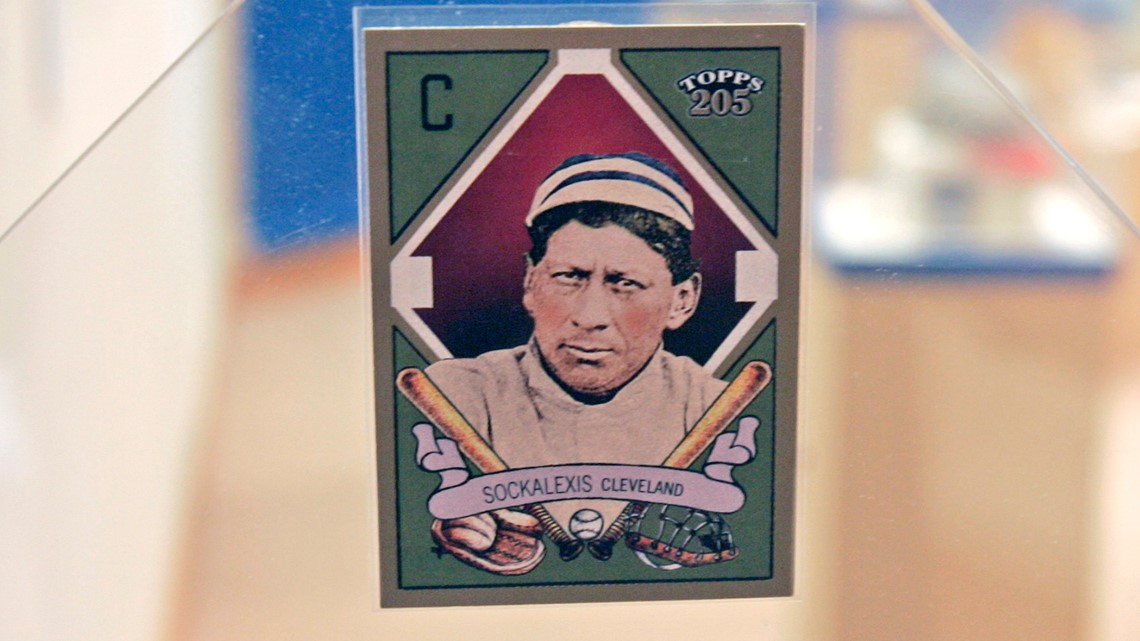
"Spiders" was apparently despised by Northeast Ohioans for reasons not fully known, and nicknames were much more fluid back then. Despite this, the club never dropped its official identity, although it didn't prevent fans from often racist behavior (such as yelling "Scalp 'em!") during games.
Sadly, things would turn south in a hurry for Sockalexis, as the alcoholism that had gotten him expelled from Notre Dame again reared its ugly head. A drunken episode at a brothel caused him to (either purposefully or accidentally) fly out a second-story window and badly injure his ankle. He would play in just eight more games from July onward. Sockalexis' play rapidly declined after that first season, and he was released only seven games into the 1899 season.
For years, the Indians would claim their current nickname was completely in honor of Sockalexis and his exploits with the Spiders. Modern research has shown the memories of his tenure at least partly inspired the change in 1915, but that there were far more factors at play.
'The Misfits'
Most of you have probably seen the movie "Major League," where crooked "ex-showgirl" owner Rachel Phelps attempts to stack the Indians with bad players in order to eventually move the team to Miami. Truth is, a very similar thing happened to the Cleveland Spiders, but unlike the film, there would be no Cinderella ending.
Prior to the turn of the century, owning multiple baseball teams in one league was legal. The Robison brothers took advantage when they bought the bankrupt St. Louis Browns in 1899 and renamed them the Perfectos (you might be more familiar with them as the Cardinals). The two decided St. Louis would be a better market for selling tickets, so they hatched a corrupt and truly evil scheme: They would ship all of Cleveland's best players to Missouri and build the Perfectos into a National League contender, while the Spiders would be left to run as a "sideshow."

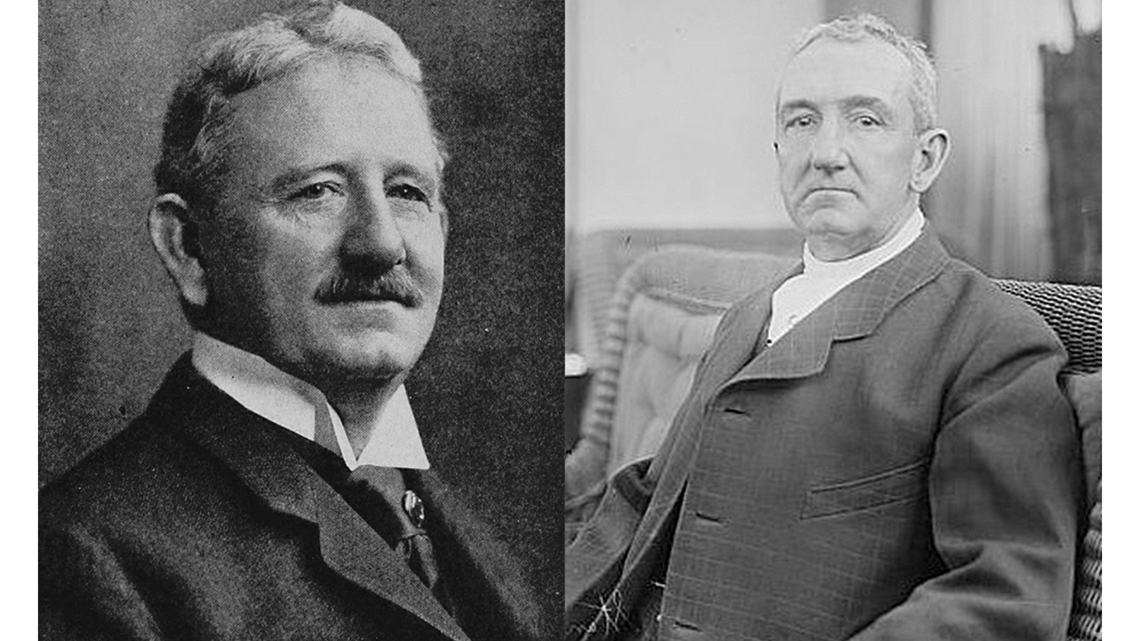
And so the wheels were set in motion: Men like Young, Burkett, Cuppy, and Tebeau were all sent to the banks of the Mississippi. Taking there place on the shores of Lake Erie would be—though they surely gave it their all—a combination of "misfits" (as the press dubbed them) who had no business setting foot on a Major League diamond.
Fans could only watch in horror as the Robisons destroyed their NL contender, and the local press vilified what they saw as a disgraceful situation. The Plain Dealer's headline writers summed it up best following a 10-1 Opening Day loss to the aforementioned Perfectos: "THE FARCE HAS BEGUN."
How bad was it? The 1899 Spiders endured six separate losing streaks of at least 10 games, including a 23-game slide that was part of an unfathomable 1-40 finish to the season. Crowds in Cleveland got so bad other NL teams refused to travel to League Park because of lost revenues, and the club would play only seven true home games after July 3. There was a bright spot on May 21 when the hapless bunch capped its longest winning streak of the season: Two.
Taking the place of Cy Young was veteran Jim Hughey, and all he did was post a 4-30 record that still stands as the worst in MLB history. It wasn't just from lack of run support either, as his ERA was a dismal 5.41.
Even more incredible? Hughey actually led the Spiders in wins and ERA, and somehow completed 32 of his 36 starts. The rest of the rotation was rounded out by the likes of Charlie Knepper (4-22), Frank Bates (1-18), Frederick "Crazy" Schmit (2-17), and Harry Colliflower (1-11).
The offense was better, but not much: Second baseman Joe Quinn—who also served as manager for the last 116 contests—led the way with a respectable .286 average, but the squad averaged only 3.4 runs per game (the pitchers allowed 8.1). Only one other everyday player hit above .250, and to add insult to injury, longtime catcher and fan-favorite Charles "Chief" Zimmer was released in June despite hitting .342 in 20 games.
The fielding was abysmal as well, although surprisingly the Spiders did not finish last in the NL in either errors or fielding percentage. Still, of the 1,252 runs the team gave up, 358 (a large gap) were unearned.
To top it all off, the Robisons' neglect found its way to the players' checkbooks. As Terry Pluto wrote in his 1998 book "Our Tribe":
"...the Spiders weren't even being paid their salaries—just a pittance of meal money. They were told they'd receive their checks as soon as they returned home, but ownership kept canceling the games in Cleveland and sending the team to yet another city to take a horrible beating. At one point, they were six weeks behind on their salaries."
When the dust mercifully settled over Baseball Hell, the Spiders finished dead last with a record of 20-134, 84 games out of first. It remains the most-futile season in MLB history, and frankly, it would take a lot of effort to surpass it.
Those around the game were disgusted by the Robisons' actions, and the spectacle played a hefty role in owners soon being banned from controlling more than one team at a time. The changes were too little, too late for the Spiders, however, as they along with three other NL squads folded for good.
The National League was forever gone from Cleveland, but just two years after the Spiders bottomed out, local coal millionaire Charles Somers became the owner of a team in the startup "American League." The third iteration of the "Cleveland Blues" would finally stick, but you have grown to know them as the "Cleveland Indians."
Appreciating the past
The debate over the Indians' name rages on, and "Spiders" is understandably at the center of it: Some love the label and see it as a perfect nod to our city's sports history; others (much like during the 1890s) hate it, either because they can't stand the eight-legged creatures to begin with or don't want to be reminded of the era that saw baseball's biggest laughing stock.
All who watched the Spiders play in the 19th century have long since left this earth, and when it comes to that team the enduring legacy has been 20-134. But it shouldn't be that way, for it's really about so much more than that.
It's about triumphs like the Temple Cup title, or some of the greatest players ever to take the field (how in the world does Cy Young not have a statue outside Progressive Field?). Most of all, it's about the beginnings of America's pastime in Cleveland, and the wonderful memories the Spiders surely created for men, women, and children across the region when they saw them at League Park for the first time.
Those memories were the same ones we, our parents, and grandparents have of the Indians at Municipal Stadium or Jacobs/Progressive Field, and they deserve to live on no matter how much time has passed or how many teams fold or move away. Whatever the club's name is come next season, we can only hope new memories will be created for generations to come.
Information from Terry Pluto's "Our Tribe," Baseball Prospectus, and the Society for American Baseball Research contributed to this story.
MARK NAYMIK: Indians home opener protest planned

